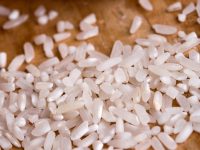HISTORY OF RICE
The history of rice dates back to approximately 2,800 B.C., making it one of the oldest known crops. Today, rice is a vital food crop worldwide, serving as a staple food for more than half of the global population. It is cultivated in 89 countries, with a total yield of nearly 500 million metric tons.
Pakistan has emerged as one of the fastest-growing rice-producing nations in Asia. Rice holds significant cultural and culinary importance in Pakistan, being used in various occasions and meals, from festive to everyday routines. No banquet or meal is considered complete without rice in Pakistan.
Botanically known as “oryza sativa,” rice is a highly nutritious grain that is widely consumed across the globe. It is easily digestible, rich in starch, and offers various essential nutrients. The nutritional value per 100 grams of rice includes approximately 6.4 grams of protein, 79 grams of carbohydrates, 2.4 grams of dietary fiber, 0.4 grams of fat, 0.09 ml of calcium, 0.04 ml of iron, 0.21 ml of thiamine, 0.05 ml of riboflavin, and 3.8 ml of niacin.
Please note that the provided nutritional values are per 100 grams of rice and may vary depending on the specific rice variety and cooking method.
FORM OF RICE
WHITE RICE:
White rice is a refined form of rice with the outer husk, bran, and germ layers removed. It has a mild flavor, a soft and fluffy texture when cooked, and comes in different varieties such as long-grain, medium-grain, and short-grain. It serves as a versatile base for many dishes but is relatively low in fiber and nutrients compared to brown rice.
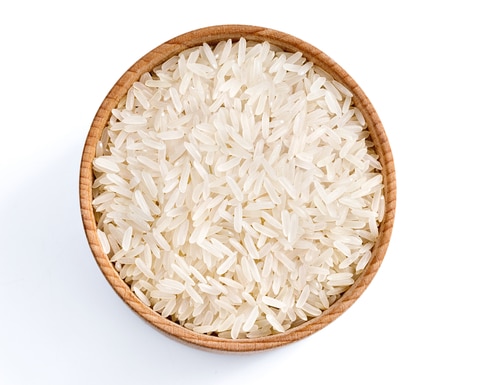
BROWN RICE:
Brown rice is a whole grain rice that retains its bran and germ layers, unlike white rice. It has a nutty flavor and a chewy texture. Brown rice is considered a healthier option because it contains more fiber, vitamins, and minerals than white rice. It takes longer to cook compared to white rice, and after cooking, it remains shorter in length due to the outer bran layers.
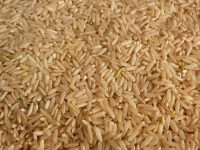
PARBOILED RICE:
Parboiled rice is rice that has been partially boiled in its husk before processing. It retains more nutrients compared to white rice and has a firm texture. It is often golden or amber in color and has a slightly nutty flavor. Parboiled rice is versatile and commonly used in dishes like biryanis and pulao

STEAM RICE:
Steamed rice is prepared by utilizing the steam generated from boiling water, resulting in a light and moist texture with distinct and separate grains. It offers versatility in terms of rice variety and pairs well with various dishes, effectively absorbing flavors. Steamed rice holds a prominent position as a widely consumed staple food enjoyed globally.
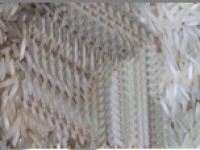
TYPES OF RICE
IRRI-6 RICE:
IRRI-6 rice, a type of non-basmati primarily cultivated in the Sindh region of Pakistan, is a long-grain variety known for its soft and elongated grains. It is a non-basmati rice, distinguished by its affordability and exceptional cooking characteristics. Over time, the export of IRRI-6 has significantly increased, making it the top-selling Pakistani rice globally. It is primarily exported in large quantities to Africa, Dubai, the Middle East
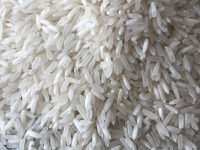
IRRI-9 RICE:
IRRI-6 rice, a type of non-basmati primarily cultivated in the Sindh region of Pakistan, is a long-grain variety known for its soft and elongated grains. It is a non-basmati rice, distinguished by its affordability and exceptional cooking characteristics. Over time, the export of IRRI-6 has significantly increased, making it the top-selling Pakistani rice globally. It is primarily exported in large quantities to Africa, Dubai, the Middle East
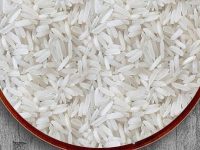
SUPREE RICE:
Supree Rice is a non-basmati rice variety known for its excellent quality and unique characteristics. With a grain length averaging around 6.0 to 6.8 millimeters, it showcases long and slender grains. This rice is widely appreciated for its versatility in various culinary applications. Whether it is used in traditional dishes or modern recipes, Supree Rice delivers a delightful texture and distinct flavor. Its popularity stems from its affordable price and remarkable cooking properties, making it a preferred choice for rice lovers around the world.
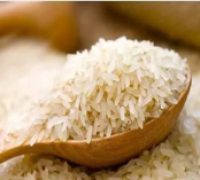
1121 RICE:
1121 Basmati rice, with an average grain length of 8.2-8.5 MM, is renowned worldwide for its exceptional cooking quality and delicate flavor. The grains retain their separate and fluffy texture even after cooking. Despite being relatively new, 1121 Basmati Rice has quickly gained a strong market presence. Similar to Super Basmati Rice, it is primarily grown in the Punjab region of Pakistan. Basmati Rice is a natural gift with a divine taste. This variety is prized for its extraordinary length, aromatic fragrance, and delectable flavor. It is widely used in the preparation of biryani, fried rice, and pulao, showcasing its versatility in various culinary creations.
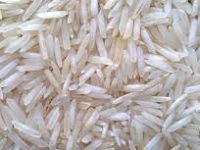
1509 RICE:
1509 Rice, a coveted Basmati rice variety, with an average grain length of 8.4-9.00 MM and is known for its Aromatic fragrance. It is prominently cultivated in Pakistan, particularly in the Punjab and Sindh regions. These regions provide the ideal climatic conditions for the production of this rice. 1509 Rice from Pakistan exhibits the hallmark traits of Basmati rice, such as its long grain length, aromatic fragrance, and pearl-white appearance. It carries the essence of Pakistani agriculture and is cherished for its superior taste and quality, making it a preferred choice for both domestic and international markets.
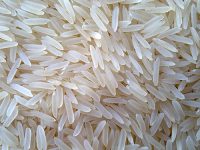
SUPER KERNAL BASMATI:
Super Kernal Basmati White Aromatic Rice, grown in the Himalayan hills, stands out with its distinctive taste and aroma. Its grain length is approximately four times larger than its width, making it easily recognizable. With Pakistan producing over 2.5 million tons of basmati rice, about 30% is consumed domestically, while the majority is exported globally.
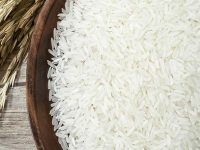
PK 386 BASMATI RICE:
PK 386 Basmati Rice, with an average grain length ranging from 6.0 to 6.8MM. It is traditionally cultivated in select regions of Punjab for many years, showcases elongated and separate grains with a genuine aroma and delightful flavor when cooked. This variety of rice is widely appreciated in Europe and the Middle East, adding a touch of culinary excellence to diverse cuisines
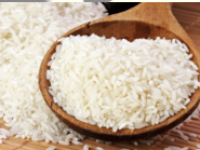
100% BROKEN RICE:
100% broken rice refers to rice grains that are broken into smaller fragments during the milling process. This type of rice is typically a byproduct of the rice milling industry. It is called “100% broken” because all the grains have been broken, and there are no intact whole grains remaining. Despite being fragmented, 100% broken rice still retains its nutritional value and can be used in various culinary applications. It is often utilized in the production of rice flour, as an ingredient in food products, or as a cost-effective option for animal feed.
